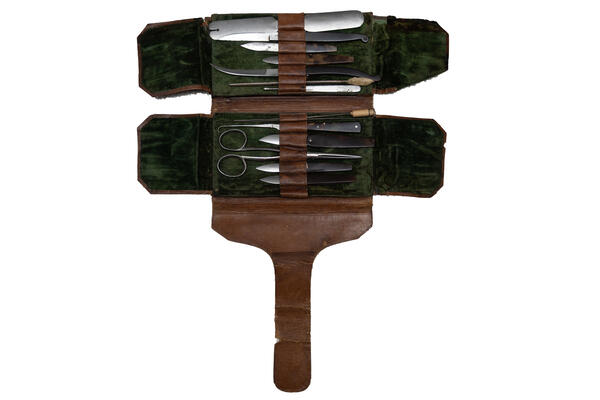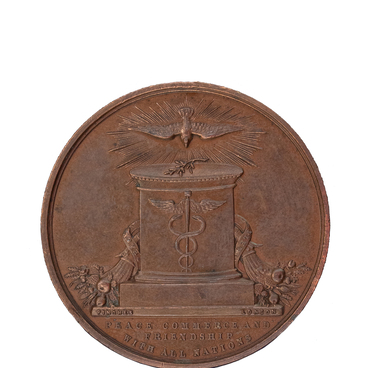During the defense of Sevastopol in 1854-1855, naval and ground medics, led by the divisional doctors, helped the wounded and injured.
From October to December 1854, more than 3.5 thousand wounded were received at the Main dressing station alone, they underwent about 200 operations. During the entire period of the defense of Sevastopol, doctors performed about 10 thousand surgeries, including amputations.
There was a particularly acute need for a temporary military hospital and dressing stations. In September 1854, they were visited by Vice Admirals Pavel Stepanovich Nakhimov and Vladimir Alekseevich Kornilov. They saw that there were not enough doctors and paramedics and ordered all the doctors who were not busy with the service to appear at the hospital. They had to take surgical instruments and dressings with them.
Surgeons, nurses and battalion doctors worked at dressing points, hospitals and infirmaries. The set of medical instruments, which is in the collection of the museum, was used by Maximilian Reiman, a doctor of the Brest Infantry Regiment.
The instruments are stored in a brown leather case with a green velvet lining. These 19th-century travel kits included surgical scalpels, a flat throat spatula for examining the mouth and pharynx, a hook to expand the edges of the wound, a grooved probe, a hemostat, and a Volkmann spoon, a tool used to take samples of mucous and tissues for tests.
When a wounded soldier was admitted to a temporary military hospital, surgeons first examined the wound. The damaged edges were pushed apart with fingers or a special tool, then a foreign body, such as a bullet or a splinter, was searched for with a probe and removed. The scalpel was used when a wide dissection of tissues was needed. Often, with complications from gunshot fractures, the injured limbs were amputated. It was believed that the danger from a gunshot wound is so great that the harm of amputation in comparison with it is significantly lower.
Various antiseptic preparations were used to clean wounds, cauterize, deodorize decaying and dying tissues: alcohol, iodine tincture, resins, tar and others. Wounds were tied up with canvas bandages or lint, a substitute for cotton wool.
From October to December 1854, more than 3.5 thousand wounded were received at the Main dressing station alone, they underwent about 200 operations. During the entire period of the defense of Sevastopol, doctors performed about 10 thousand surgeries, including amputations.
There was a particularly acute need for a temporary military hospital and dressing stations. In September 1854, they were visited by Vice Admirals Pavel Stepanovich Nakhimov and Vladimir Alekseevich Kornilov. They saw that there were not enough doctors and paramedics and ordered all the doctors who were not busy with the service to appear at the hospital. They had to take surgical instruments and dressings with them.
Surgeons, nurses and battalion doctors worked at dressing points, hospitals and infirmaries. The set of medical instruments, which is in the collection of the museum, was used by Maximilian Reiman, a doctor of the Brest Infantry Regiment.
The instruments are stored in a brown leather case with a green velvet lining. These 19th-century travel kits included surgical scalpels, a flat throat spatula for examining the mouth and pharynx, a hook to expand the edges of the wound, a grooved probe, a hemostat, and a Volkmann spoon, a tool used to take samples of mucous and tissues for tests.
When a wounded soldier was admitted to a temporary military hospital, surgeons first examined the wound. The damaged edges were pushed apart with fingers or a special tool, then a foreign body, such as a bullet or a splinter, was searched for with a probe and removed. The scalpel was used when a wide dissection of tissues was needed. Often, with complications from gunshot fractures, the injured limbs were amputated. It was believed that the danger from a gunshot wound is so great that the harm of amputation in comparison with it is significantly lower.
Various antiseptic preparations were used to clean wounds, cauterize, deodorize decaying and dying tissues: alcohol, iodine tincture, resins, tar and others. Wounds were tied up with canvas bandages or lint, a substitute for cotton wool.



